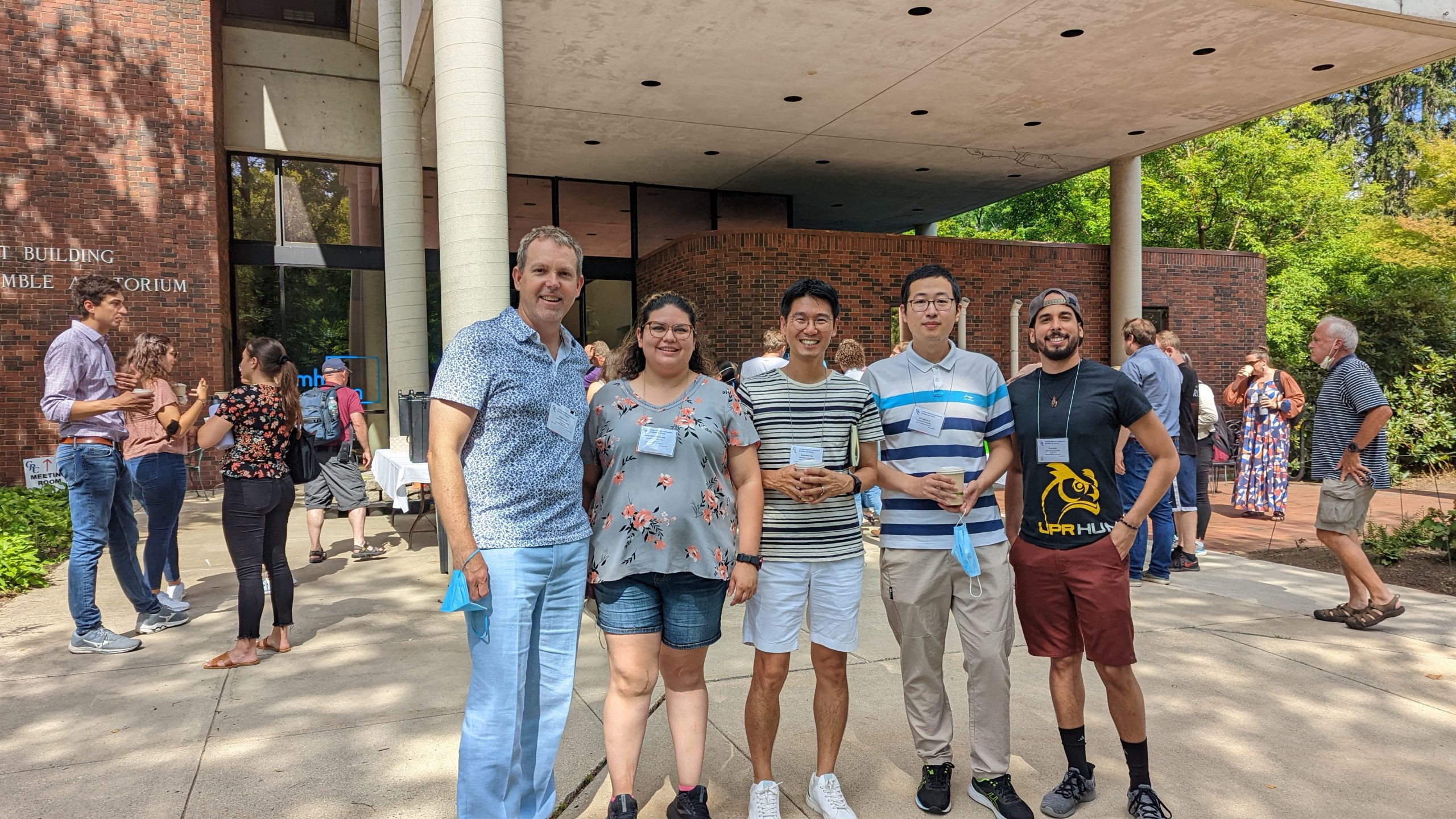Zhongyuan participated in the GRC ceramics and gave a poster presentation!
Title of poster: Micromechanical characterization on amorphous carbon and its nonporous structure.
(Bryan, Karla, Seok-Woo, Zhongyuan, Luis): Prof. Bryan Huey’s group were there together!
Abstract:
Micro-mechanical characterization on amorphous carbon and its nanoporous structures
Zhongyuan Li1,*, Ayush Bhardwaj2, James Watkins2, Seok-Woo Lee1
- Department of Materials Science and Engineering & Institute of Materials Science, University of Connecticut, Storrs, Connecticut 06269-3136, United States
- Department of Polymer Science and Engineering, University of Massachusetts, Amherst, Massachusetts 01003, USA
Carbon materials, such as diamond, graphite, and their related structures, have been often classified as a ceramic due to their high melting point, high hardness, and high brittleness. Carbon materials has a strong potential as a structural material due to their strong ionic/covalent C-C bond, but the brittleness of most carbon materials have limited their structural applications. In this study, we have developed amorphous carbon and its nanoporous structures with 40, 50, and 60% of porosity by rapid thermal annealing of Brush block copolymer and have investigated their plasticity and fracture behaviors. To evaluate the mechanical response, we performed nanoindentation and in-situ compressive tests on a micropillar, which was fabricated by utilizing focused-ion-beam milling. Both fully dense and nanoporous structures exhibit a large compressive fracture strain up to ~40% with a high work hardening rate. This exceptional fracture strain could result from dynamic re-distribution of sp2 and sp3 bonds during plastic deformation. In addition, we found that compressive fracture strength is nearly independent of porosity unlike the indentation hardness that scales with the porosity. We think that the porosity-independent fracture strength could be related to the size-affected strength of nanoscale ligands. The size reduction of ligand at the nanoscale could enhance its fracture strength, leading to the negligible decrease in fracture strength of the entire nanoporous structure. Also, we found that all samples demonstrate the excellent modulus of resilience the orders of magnitude higher than most engineering materials due to their low Young’s modulus, implying that amorphous carbon materials have a strong capability to absorb and release the mechanical energy. However, the yield strength of our fully dense amorphous carbon (1.5 GPa) is much lower than that of amorphous carbon that includes tetra-type C-C bonds (20 GPa). Lack of the halo ring pattern in TEM diffraction pattern indicates that our amorphous carbon possesses the random atomic arrangement even for the nearest neighbor carbons. This fully liquid-like atomic arrangement does not seem to be desirable for the yield strength but to be greatly beneficial for the ductility. It would be necessary to control the degree of a short-range C-C ordering or the population of tetra-type C-C bond to enhance the yield strength without sacrificing the ductility through the optimization of synthesis conditions or the post thermal and mechanical treatments.

